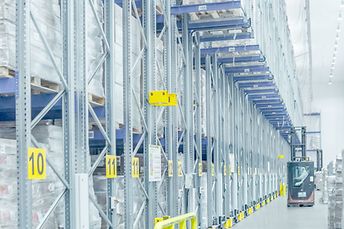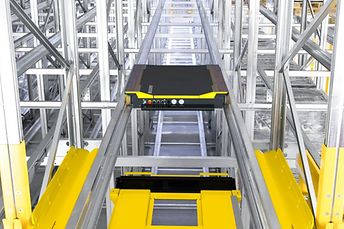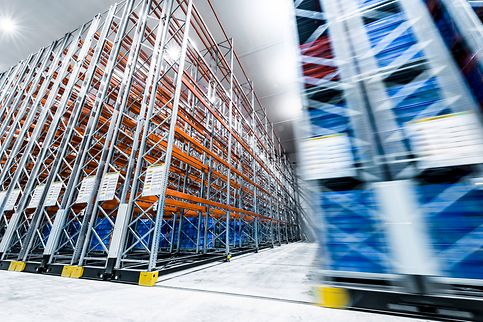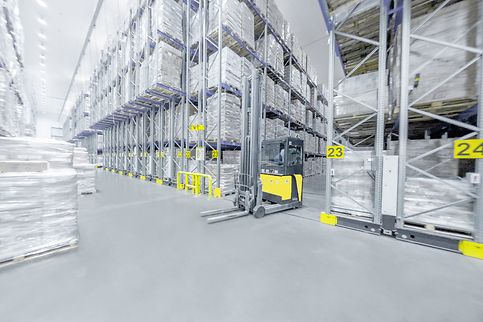Improving Logistics Infrastructure To Meet The Growth In Asia’s Food Sector
The challenges wrought by 2020 have proven the importance of future proofing—or, in other words, protecting a business against the push and pulls of consumer demand, anticipating future events and minimising the effects of supply shocks.
Recent changes in consumer purchasing behaviour have turned the logistics industry on its head—and the effects of this is far-reaching. For example, The Guardian newspaper predicted that online supermarket product sales would increase by a quarter due to the pandemic—but that is not the surprising factor. In relation to this upswing, Forbes also indicated that 82 percent of consumers are now more interested in buying products online instead of brick and mortar stores, with or without the looming pandemic.
This boils down to a few pain points for manufacturers and warehousing operators: a rise in need for increased warehouse space for more stock keeping units, challenges to quicker speed for order fulfillment and cost savings for the business in the long run.
This leads to the question—how can warehouse operators better equip themselves to become more future-savvy by overcoming fulfillment and distribution challenges with the warehousing constraints they already currently have?
Challenge #1: Space Constraints
Space limitation is a common challenge for warehouse operators. While demand for consumer products surges during unprecedented times, the space required to store SKUs increases as well. What happens when the increase in SKUs goes above and beyond the available storage space in the warehouse?
In facilities based within city centres, acquiring extra square footage for this purpose is an expensive endeavor in the long run. Rather than look externally for solutions, operators can consider the use of vertical space or under-utilised space within their current warehouse.
The concept of Mobile Racking Systems is well-suited for warehouses that need to expand their storage space for heavy loads. This entails a solution that maximises the use of dimension of the warehouse space and can increase the storage volume by up to 100 percent. Aisle space is also converted into storage space with this modular concept, resulting in space optimisation within a warehouse, creating the bandwidth for higher storage capacity requirements for larger items and thus providing a degree of flexibility for operators during high-demand seasons.

The mobile racking system has a modular concept that enables operators to have a clear view of their SKUs. Aisles can be reorganised with ease according to storage requirements with a clever control system known as the programmable logic controller (PLC), empowering operators to create a storage system that is ideal for their warehouse requirements.
Challenge #2: Labour Constraints
Many warehouses in Asia are reliant on labour for their operations. Under usual circumstances, labour is abundant within this region, however recent events have forced the industry to reach for different solutions when labour cannot be fully accessed. With demands for consumer goods increasing and labour being a limited-access resource, this is an ideal time for operators to consider a hybrid semi-automated warehousing system.
Why should operators consider a semi-automated warehousing system?
A semi-automated warehouse is an operation that utilises both automation solutions as well as labour in key areas to improve warehouse performance.
When compared to a traditional labour-reliant warehouse set-up, a semi-automated warehouse provides improved efficiency, faster order fulfillment, reduced labour costs, lower risk of accidents and higher density storage as employees do not need to physically access stored goods.
Mobile Pallet Racks: ensuring flexibility for large & heavy goods
Optimising space within existing warehouse square footage is SSI SCHAEFER’s forte, and mobile pallet racks are one way to do so. These mobile racks are an optimal solution for large or heavy goods that need to be stored in a compact way.
Since these racks can be moved easily through guided rails on the floor using a modern control system, reorganising rack aisles for improved logistics and handling becomes a breeze for warehouse operators. Every SSI SCHAEFER mobile rack system is geared towards improving storage capabilities and is equipped with a modern programmable logic controller (PLC) that includes integrated safety features. This modular concept enables operators to create the perfect system for their specific warehouse wants and needs.
For warehouses operating in a cold store or deep-freeze environment, energy conservation and reducing overhead costs are key concerns. SSI SCHAEFER’s mobile racks can be used alongside other solutions such as conveying systems, system powerful electric drives, and effective configurations within deep-freeze environments to keep storage compact, reducing the need to cool any fresh room temperature air. In the long run, this helps to lower the overhead costs of cooling down the warehouse.
Channel Storage System: Improving order fulfillment time
Store and retrieve a large volume of items with shorter inventory cycle time. For efficient fulfillment of large volume/homogeneous goods especially for the beverage or food industry, the FILO or FIFO principles should be in line with the pallet storage movements in the warehouse.

SSI SCHAEFER has worked with clients that have integrated racks into their warehouse set-up from 9 to 12 metres high. At this height, a special innovative device known as the SSI ORBITER® is used to store and retrieve goods, depending on the inventory control methods, the channel storage enables pallets to be removed at either end of the racks, thus increasing the speed of goods to person picking. This eliminates the physical travel time of employees to pick goods and improves the accuracy of order fulfilment as the correct goods are transported directly to the picker in record time.
Devices like the SSI ORBITER® are controlled electronically, so fewer operators are needed onsite to manage the warehouse. This provides businesses the opportunity to achieve more from every shift, as well as dramatically reduce the incidences of safety issues.
Planning For The Future: SSI SCHAEFER’s Semi-Automated Warehousing Solutions
To keep up with ever-shifting consumer demand, warehouse operators need to examine their current warehouse set-up and identify pain points.
For example, is there a need for expansion to store large SKUs? Can time be saved by moving from manual racking to mobile racking? How can the existing warehouse set-up be automated and optimised?
Once identified, SSI SCHAEFER can combat these pain points by providing warehousing solutions that are safe, efficient and cost-effective in the long run.
By introducing automation, operators benefit from:
Reduced operational / labour costs
Higher density storage
Safer work environment
Quicker goods to person picking times
Faster order fulfilment
Disclaimer:
This article was originally published in Asia Pacific Food Industry magazine’s September 2021 issue. Read the original version here.


